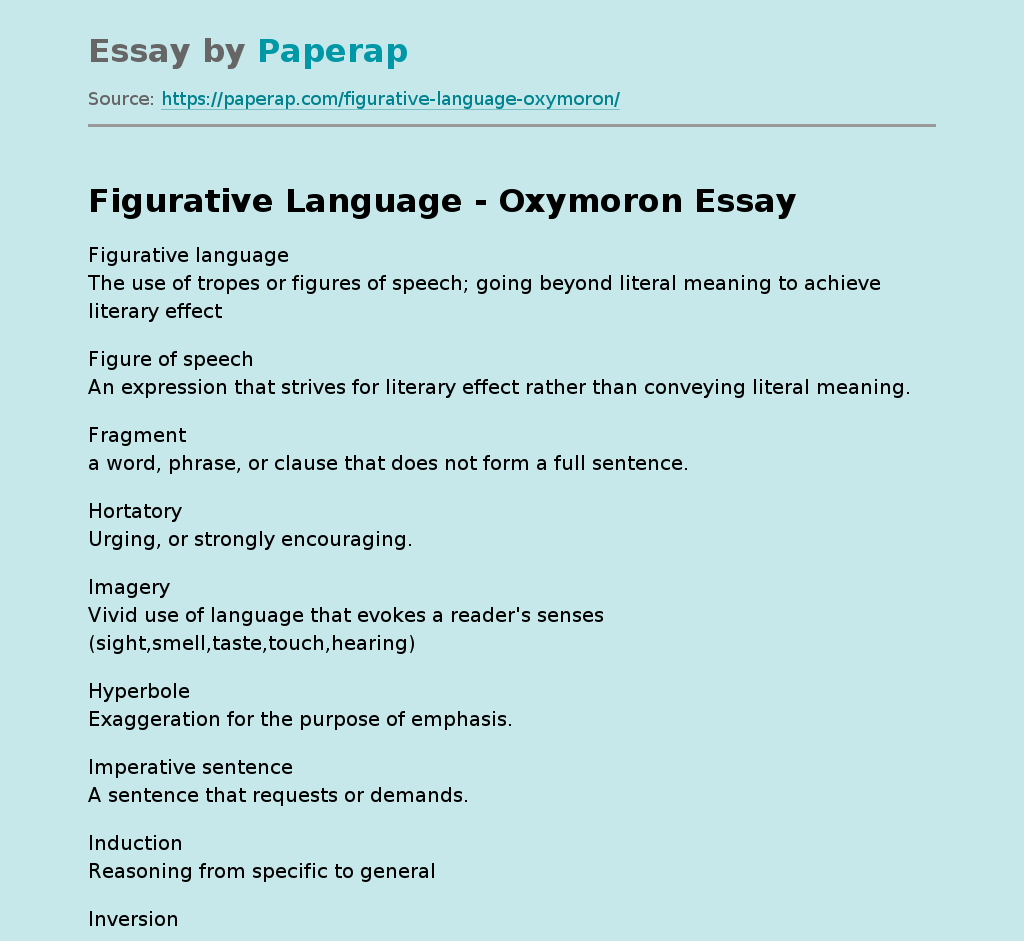Figurative Language - Oxymoron
Essay,
Pages 1 (222 words)
Views
11
Figurative language
The use of tropes or figures of speech; going beyond literal meaning to achieve literary effect
Figure of speech
An expression that strives for literary effect rather than conveying literal meaning.
Fragment
a word, phrase, or clause that does not form a full sentence.
Hortatory
Urging, or strongly encouraging.
Imagery
Vivid use of language that evokes a reader’s senses (sight,smell,taste,touch,hearing)
Hyperbole
Exaggeration for the purpose of emphasis.
Imperative sentence
A sentence that requests or demands.
Induction
Reasoning from specific to general
Inversion
A sentence in which the verb comes before the subject.
Irony
A contradiction between what is said and what is meant; incongruity between action and result.
Juxtaposition
Placement of two things side by side for emphasis.
Logos
A Greek term that means “word”; an appeal to logic
Metaphor
a comparison of two unlike things, not using like or as. “Your eyes are stars”
Metonymy
use of an aspect of something to represent the whole
Modifier
A word, phrase, or clause that qualifies or describes another word, phrase, or clause.
Narration
Retelling an event or series of events
Nominalization
Turning a verb or adjective into a noun
Occasion
An aspect of context; the cause or reason for writing
Omniscient Narrator
An all-knowing, usually third-person narrator.
Oxymoron
A figure of speech that combines two contradictory terms.
Figurative Language - Oxymoron. (2019, Jan 30). Retrieved from https://paperap.com/figurative-language-oxymoron/
